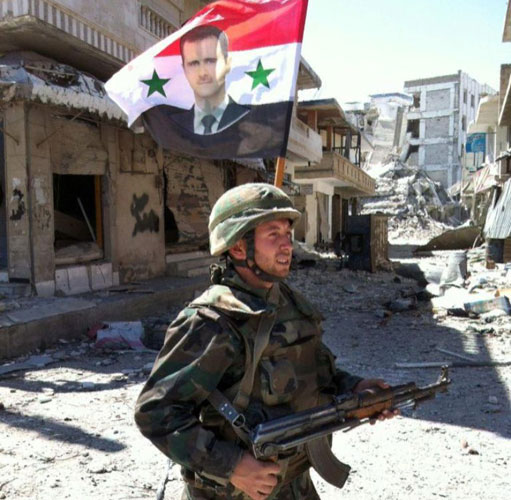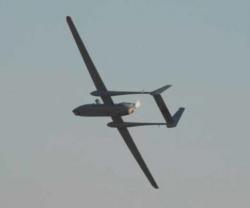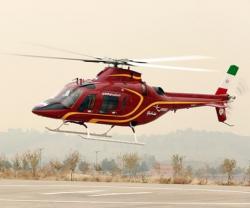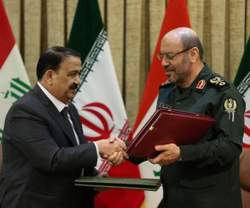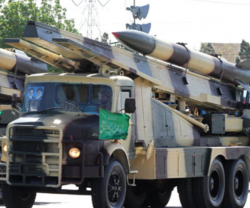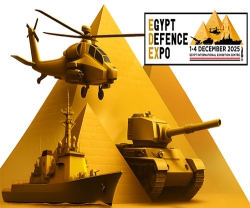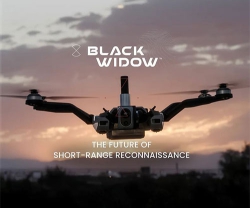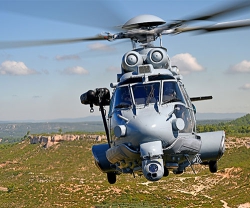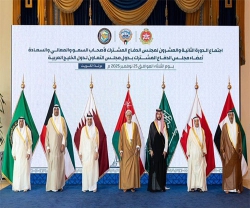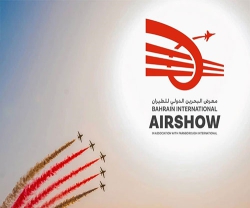The new organization, described as similar to the highly organized and well-armed Lebanese Hezbollah group, would bring together Afghan and Iraqi mercenaries under one military command.
“This army would resemble Hezbollah in Lebanon… and will gradually work on recruiting Syrians,” Siraj Press quoted a source as saying.
The organization would then be well-armed and trained to be an independent force for long-term presence in Syria, even if the regime of President Assad collapses.
The Iranian move coincided with Damascus’ decision to recruit thousands of Syrian youth to join military service.
Jordanian Maj. Gen Fayez al-Doueiri suggested that Iranian Gen. Qasem Suleimani, the Commander of Qods Force, was behind the new Iranian project. He noted that it was Suleimani’s idea to send Iran’s Basij brigades to Syria in the early months of the Syrian civil war. He explained how Suleimani reportedly used Iraq as a training ground for foreign Shiite militias who desired to join the Syrian civil war.
Tehran, the longtime supporter of Assad’s regime, could be re-adjusting its strategy in Syria following the rise of the militant Islamic State of Iraq and Syria (ISIS) group and the ongoing U.S.-led military campaign, according to Gen. Doueiri.
He suggested that Tehran no longer sees Assad’s tattered army as reliable to safeguard its interests in the country; so it needs a “parallel army” for long-term service.
The new army would provide field support for the Assad’s army, which has reportedly lost more than 200,000 fighters since the civil war began in 2011.
Syria provides a strategic bridge between Iran and Hezbollah, its proxy militia in Lebanon. The fall of Syria to the liberal, pro-West opposition means that Hezbollah could be isolated and Iran’s strategic reach could be diminished.
Meanwhile, Commander of the Islamic Revolution Guards Corps (IRGC) Aerospace Force Brigadier General Amir Ali Hajizadeh said Syria's missile-production plants have been built by Iran.
“The missile production plants in Syria have been built by Iran and the missiles designed by Iran are being produced there,” Hajizadeh said in an interview Tuesday, adding that even the resistance front in Palestine and Lebanon has received missile-production trainings from Iran.
“The Lebanese Hezbollah and the Palestinian resistance have grown highly powerful in this field (missile production) now,” he added.
On Wednesday, Lieutenant Commander of the IRGC Aerospace Force Brigadier General Seyed Majid Moussavi announced that the Lebanese and Palestinian resistance groups are in possession of Fateh-class missiles which were developed by Iran a few years ago.
Moussavi said that the late Commander and Head of the IRGC Missile Research Center, Major General Tehrani Moqaddam, who died in an explosion in 2011, supported and helped Hezbollah and the Palestinian resistance groups to develop missile capabilities.
“Considering the range of their missiles, they are able now to attack all targets from Southern to Northern parts of the occupied territories,” he said.
Source: Al Arabiya; Siraj; FNA

